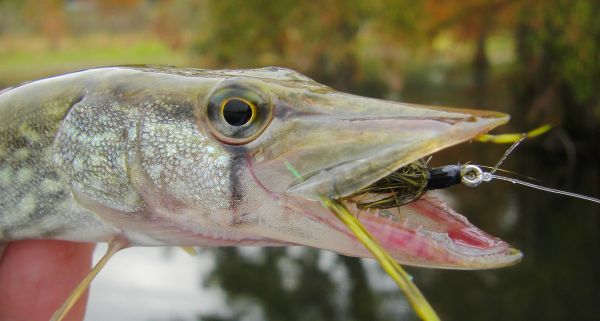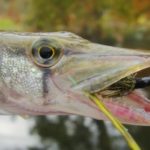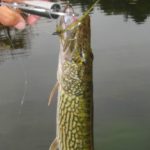
Louisiana’s pike love this classic fly
The rivers and lakes of Alaska offer the best fly fishing in North America. Its waters teem with steelhead, arctic char, grayling, dolly varden, trophy rainbow and lake trout, and five species of salmon, including the mighty king salmon.
Oh, and there’s one more — northern pike.
Fourteen years ago, my friend George Norton and I spent a week in the “The Last Frontier” fishing the Yentna River system. It was our first trip up there, and we had salmon on the brain.
After several days of hooking and fighting dozens of silver and chum salmon on the long rod — and loving every minute of it — our guide offered us a change of pace.
He took us on a long hike to a grassy lake that was supposedly thick with pike in the 5- to 10-pound range.
Pike are long, slender fish with large, duck-billed mouths full of pointed teeth. Imagine a freshwater barracuda; they fight like them, too.
The lodge kept a john boat on the lake. We took turns standing in the front of the boat, sight-casting to the toothy predators.
Now, I’d fished for pike before in Wisconsin and Canada, but with commie tackle. I knew what to expect. At least I thought I did.
This day we were tossing Seaducers on 9-weight rods. As we stripped our Seaducers just under the surface, the fish would emerge from cover and V-wake on the flies.
When the pike hit the fly, all hell broke loose. It made me a convert. No more commie tackle for these fish.
George and I caught a lot of fish that day. The guide told us the reason for our success was the fly — pike love Seaducers.
In the years since, I’ve proved that theory many times over. Sometimes without even leaving my backyard.
Louisiana is too far south for northern pike. However, many of our lakes contain a close relative known as Esox Niger — the chain pickerel.
Also known as “jackfish,” “chain pike” or “grass pike,” chain pickerel don’t get nearly as big as their northern cousins. The state Top 10 list for rod and reel ranges from 4.38 pounds to 5.75 pounds. The average size is about 3 pounds.
Lots of fun on a 6-weight rod.
I’ve noticed here on Lake Cotile that jackfish love cold water. Even with water temperatures in the 40s, they’ll hang in the shallows. Once it starts to get hot, they disappear completely.
Then one day in October they’ll suddenly show up, seemingly everywhere. Unless you’re fishing with a heavy fluorocarbon tippet, you’re putting your bass flies at risk with every cast.
Of course, if you want to target grass pike — and believe me, you should — then tie on a Seaducer.
Seaducers are perhaps the most overlooked fly today. They’ve been around since the late 19th century, and have been used for nearly every predator species from brown trout to stripers to tarpon. They’ve been credited by Chico Fernandez in landing his world-record redfish.
The Godfather of Fly Fishing, Lefty Kreh, writes in his book, Presenting the Fly, that Seaducers are “one of the best patterns for both large and smallmouth bass that I’ve fished. I never make a trip without some of these in my box.”.
Despite its many accolades, this fly is seldom seen in fly shops. But if you tie flies, good news — they’re easy to tie, and the materials are very common.
For the hook, I use a Mustad 34007 sizes 1 or 2. This is a stainless hook that allows me to use it for bass or redfish.
For the tail, tie in several strands of Flashabou or Krystal Flash. Then tie two saddle hackle feathers on each side. The feathers are slightly curved; tie them splayed out.
For the body, tie in a pair of long saddle hackles with the tips tied to the hook. Then palmer the feathers toward the hook eye and secure off with thread.
Build up a few wraps near the eye of the hook. Then soak the wraps with Hard As Nails or epoxy to prevent the toothy jackfish from tearing up the wraps.
For me, the best colors of hackle pairs have been barred olive, red/white, red/orange, and black/chartreuse. But experiment with others and see how they work.
What makes a Seaducer so effective?
First, it lands softly. I’ve put the fly on top of bass, pike and reds without spooking them.
Second, when retrieved with short, quick strips, the tail of this fly undulates while the body pulsates. Many of the synonyms for “seduce” — tempt, entice, invite, coax — apply to a Seaducer in motion.
How enticing? There are times when I’ve been tempted to jump in the water and attack the fly. Knowing that the freshwater version of a barracuda might also be chasing my fly keeps me in the boat.




